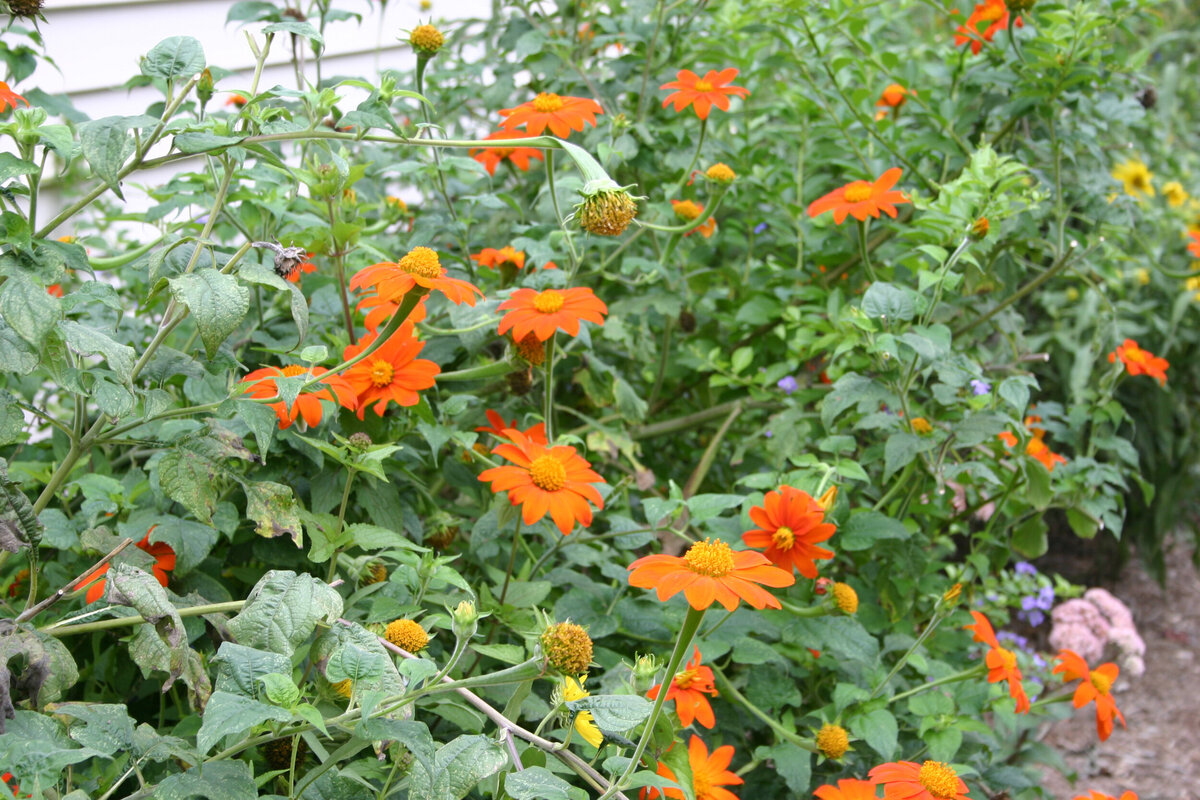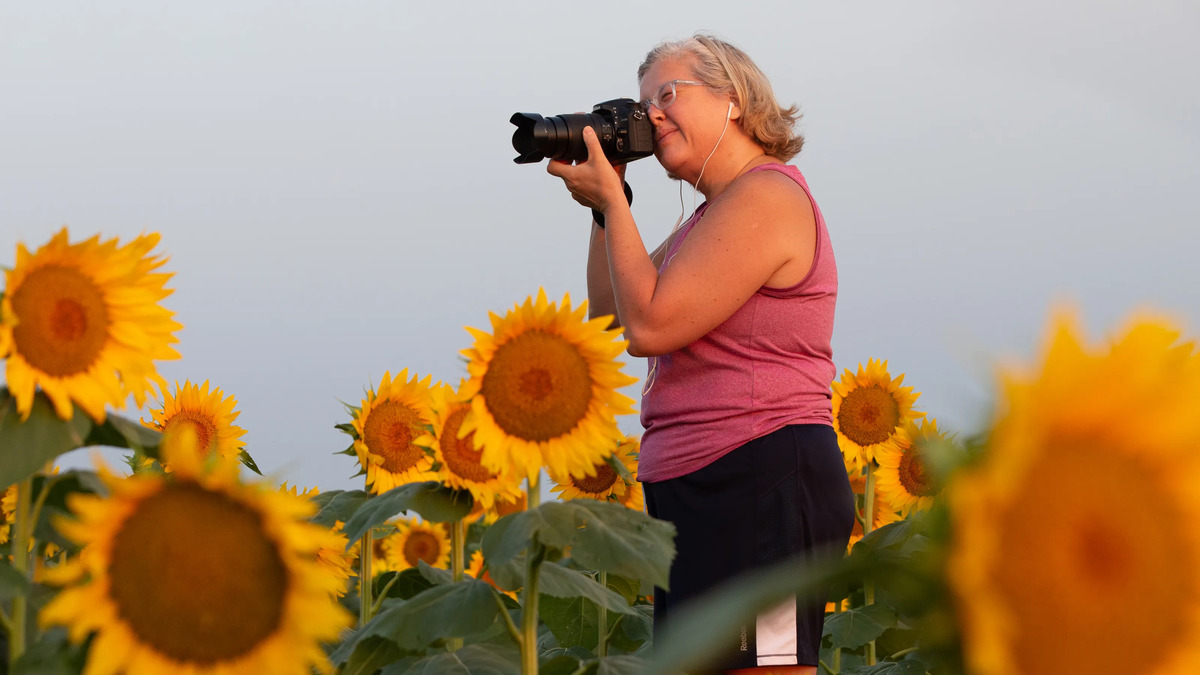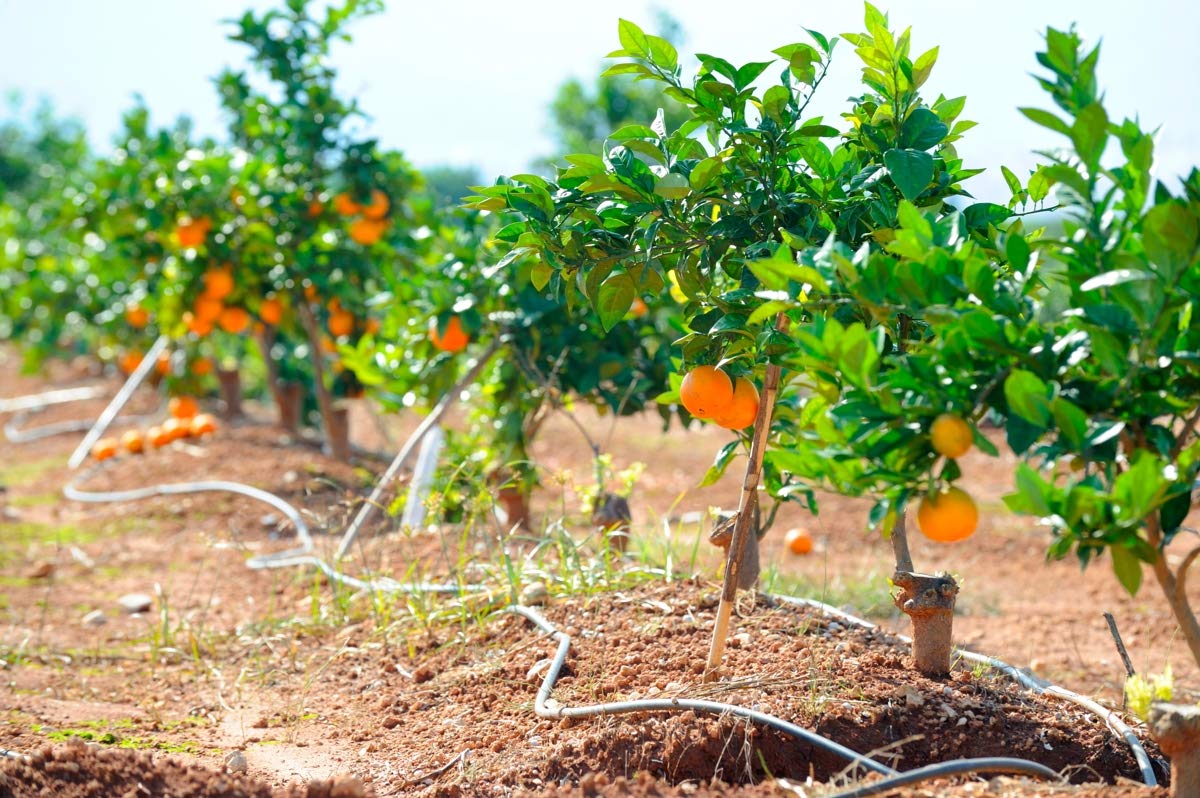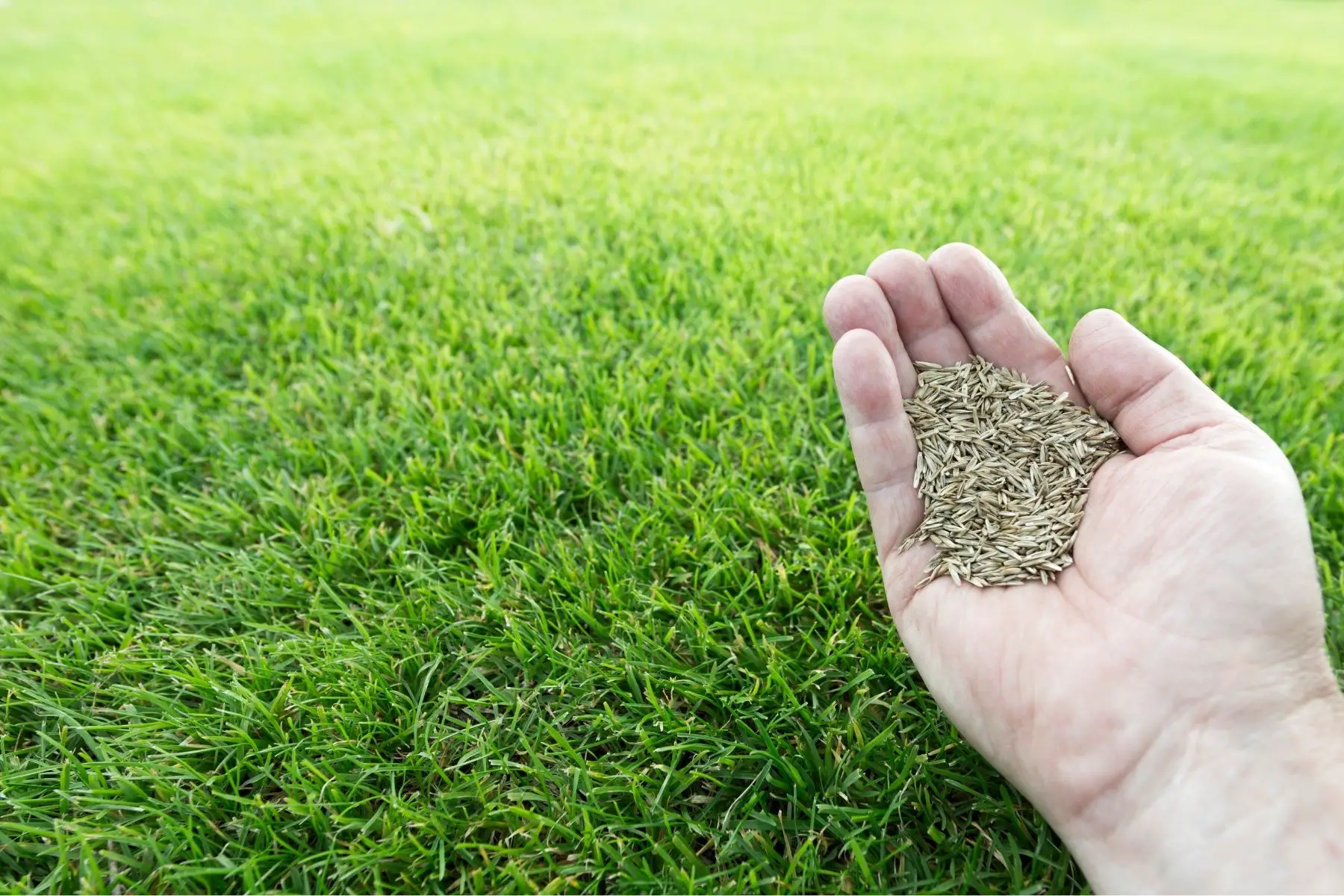Home>Types of Gardening>Ornamental Gardening>How Long Do Sunflowers Take To Bloom


Ornamental Gardening
How Long Do Sunflowers Take To Bloom
Modified: January 22, 2024
Learn about the blooming time of sunflowers in your ornamental garden. Discover how long it takes for sunflowers to bloom and tips for successful growth.
(Many of the links in this article redirect to a specific reviewed product. Your purchase of these products through affiliate links helps to generate commission for Chicagolandgardening.com, at no extra cost. Learn more)
Table of Contents
Introduction
Sunflowers are not only a stunning addition to any garden but also a source of joy and fascination for gardeners. Their vibrant yellow petals and impressive height make them a standout feature in ornamental gardens. Understanding the factors that influence the blooming of sunflowers is crucial for any gardening enthusiast. From the moment the seed is planted to the emergence of the first bloom, the journey of a sunflower is a captivating process that requires patience and care.
In this article, we will delve into the intricate details of sunflower growth, exploring the factors that affect their development and the various stages of their blooming process. Additionally, we will provide valuable insights into the optimal growing conditions for sunflowers and share expert tips for expediting the blooming phase. Whether you're a novice gardener or an experienced horticulturist, this comprehensive guide will equip you with the knowledge and techniques needed to nurture vibrant and flourishing sunflowers in your garden.
So, let's embark on a journey through the enchanting world of sunflowers, unraveling the mysteries of their growth and discovering the secrets to cultivating these magnificent blooms.
Factors Affecting Sunflower Growth
Several key factors play a pivotal role in influencing the growth and blooming of sunflowers. Understanding these factors is essential for cultivating healthy and vibrant sunflowers in your garden.
- Variety of Sunflower: The choice of sunflower variety significantly impacts the blooming timeline. Some varieties are bred for quicker blooming, while others are known for their larger size and longer blooming period.
- Climate and Season: Sunflowers thrive in warm weather and require ample sunlight. The length of the growing season and the average temperature in your region can affect the time it takes for sunflowers to bloom.
- Soil Quality: The quality and composition of the soil directly impact sunflower growth. Well-draining, nutrient-rich soil is essential for healthy root development and overall plant vigor.
- Watering and Moisture: Adequate watering is crucial for sunflower growth. While they are relatively drought-tolerant, consistent moisture levels during the early stages of growth can expedite the blooming process.
- Fertilization: Providing the appropriate nutrients through fertilization can support robust growth and encourage earlier blooming in sunflowers.
- Pest and Disease Management: Protecting sunflowers from pests and diseases is vital for preventing setbacks in growth and blooming. Regular monitoring and prompt intervention are essential for maintaining plant health.
By carefully considering and managing these factors, gardeners can create an optimal environment for sunflowers to thrive, leading to a more efficient and timely blooming process.
Sunflower Growth Stages
The journey of a sunflower from seed to full bloom encompasses several distinct growth stages, each marked by unique developments and visual transformations. Understanding these stages is essential for monitoring the progress of sunflowers and anticipating their blooming timeline.
- Germination: The first stage of sunflower growth begins with the germination of the seed. Under optimal conditions, the seed will sprout, and a tiny shoot will emerge from the soil within 7 to 10 days.
- Seedling Stage: As the seedling continues to grow, it develops its first set of true leaves and establishes a stronger root system. This stage typically lasts for 2 to 3 weeks.
- Vegetative Growth: During this stage, the sunflower plant experiences rapid vegetative growth, with the stem elongating and additional leaves and branches forming. This phase can last for 30 to 45 days, depending on the variety and growing conditions.
- Budding: The budding stage marks the exciting transition towards blooming. Buds form at the top of the stem, and the distinctive disc florets within the flower head begin to develop.
- Blooming: The blooming stage is the pinnacle of the sunflower’s growth cycle. The tightly packed buds unfurl into brilliant, radiant blooms, attracting pollinators and captivating onlookers with their vibrant colors.
- Seed Development: After the blooming phase, the fertilized flower head gives way to the development of seeds. The petals wither, and the seeds mature and ripen within the seed head.
By recognizing these growth stages and the approximate duration of each phase, gardeners can anticipate when their sunflowers are likely to bloom and plan their gardening activities accordingly. Additionally, closely observing these stages allows for timely interventions and adjustments to optimize the growing conditions and support the health and vitality of the sunflowers.
Growing Conditions for Sunflowers
Creating the ideal growing conditions is fundamental for nurturing healthy sunflowers and promoting timely blooming. By ensuring that the following conditions are met, gardeners can provide an environment conducive to robust growth and prolific blooming:
- Sunlight: Sunflowers thrive in full sunlight, requiring a minimum of 6 to 8 hours of direct sunlight per day. Select a planting location that receives ample sunlight throughout the day to support optimal growth and blooming.
- Well-Drained Soil: Sunflowers prefer well-drained soil with a slightly acidic to neutral pH. Amending the soil with organic matter, such as compost, can improve its texture and fertility, providing an ideal foundation for healthy root development.
- Spacing: Adequate spacing between sunflower plants is essential to prevent overcrowding and allow for proper air circulation. Depending on the variety, sunflowers typically require 1 to 3 feet of space between plants to thrive.
- Watering: While sunflowers are relatively drought-tolerant once established, consistent moisture is crucial during the germination and budding stages. Water the plants deeply, ensuring that the soil is evenly moist but not waterlogged.
- Fertilization: Incorporating a balanced fertilizer into the soil prior to planting can provide essential nutrients for healthy growth. Additionally, applying a phosphorus-rich fertilizer during the budding stage can support robust flower development and blooming.
- Weed Control: Managing weeds around sunflowers is important to minimize competition for nutrients and prevent potential pest and disease issues. Mulching can help suppress weeds while also conserving soil moisture.
- Support and Protection: Taller sunflower varieties may require staking or support to prevent the stems from bending or breaking under the weight of the mature flower heads. Additionally, protecting sunflowers from strong winds can safeguard their delicate blooms and foliage.
By meticulously attending to these growing conditions, gardeners can establish an optimal environment for sunflowers to thrive, resulting in robust growth and a spectacular display of radiant blooms.
Tips for Speeding Up Sunflower Blooming
For gardeners eager to witness the vibrant blooms of sunflowers at an accelerated pace, several strategies can be employed to expedite the blooming process. By implementing the following tips, you can encourage earlier and more prolific blooming in your sunflower garden:
- Early Start: To jumpstart the blooming timeline, consider starting sunflower seeds indoors in biodegradable pots several weeks before the last expected frost. This allows for a head start on growth and development, potentially leading to earlier blooming once transplanted outdoors.
- Optimal Soil Temperature: Plant sunflower seeds in soil that has reached an adequate temperature for germination, typically around 70°F (21°C). Warmer soil facilitates quicker seed sprouting and early establishment of seedlings.
- Choose Early-Blooming Varieties: Select sunflower varieties known for their early blooming characteristics. These varieties are bred to reach the blooming stage in a shorter timeframe, allowing for a more rapid display of vibrant flowers.
- Prune and Deadhead: Encourage continuous blooming by deadheading spent flowers and removing any damaged or withered blooms. This practice redirects the plant’s energy towards producing new blooms, potentially resulting in a prolonged and abundant blooming period.
- Provide Adequate Nutrition: Ensure that sunflowers receive sufficient nutrients by incorporating a balanced fertilizer into the soil and supplementing with additional nutrients as needed. Adequate nutrition supports vigorous growth and can contribute to earlier and more prolific blooming.
- Monitor Watering: Maintain consistent moisture levels, especially during the budding and blooming stages, to support optimal flower development. Avoid water stress, as it can delay blooming and hinder the overall health of the plants.
- Protect from Pests and Diseases: Vigilantly monitor sunflowers for signs of pests and diseases, as these can impede growth and blooming. Implement preventive measures and promptly address any issues to minimize setbacks in the blooming timeline.
By incorporating these tips into your gardening practices, you can proactively promote accelerated blooming in sunflowers, leading to a breathtaking and early display of their iconic and radiant flowers.
Conclusion
Embarking on the journey of cultivating sunflowers is a rewarding and enchanting endeavor, filled with the anticipation of witnessing the majestic blooms that adorn these iconic plants. By understanding the factors that influence sunflower growth, recognizing the distinct stages of their development, and creating optimal growing conditions, gardeners can nurture healthy sunflowers and guide them towards a timely and vibrant blooming phase.
From the germination of the seed to the emergence of the first radiant bloom, each stage of the sunflower’s growth offers a glimpse into the marvels of nature and the resilience of these remarkable plants. By providing ample sunlight, well-drained soil, and essential nutrients, gardeners can establish an environment that encourages robust growth and prolific blooming in their sunflower garden.
Furthermore, by implementing strategies to expedite the blooming process, such as selecting early-blooming varieties and providing attentive care, gardeners can anticipate an earlier and more abundant display of sunflower blooms, enhancing the allure of their ornamental gardens.
As you tend to your sunflowers, remember that each stage of their growth is a testament to the care and dedication you invest in your garden. Whether you’re a seasoned horticulturist or a novice gardener, the journey of nurturing sunflowers is a testament to the beauty of nature and the joy of witnessing the vibrant transformation of these iconic blooms.
So, as you immerse yourself in the art of cultivating sunflowers, may each stage of their growth fill you with wonder and anticipation, culminating in a breathtaking spectacle of radiant blooms that enrich your garden and captivate the senses.









